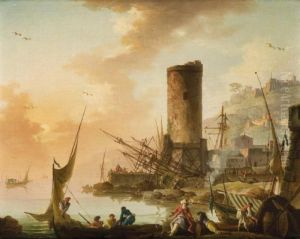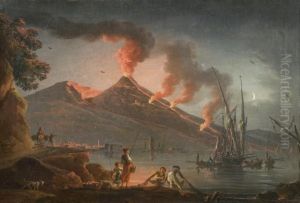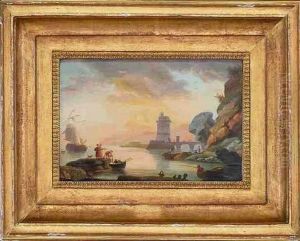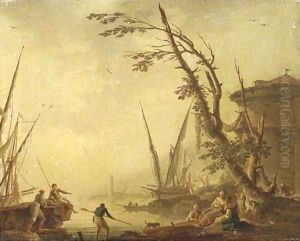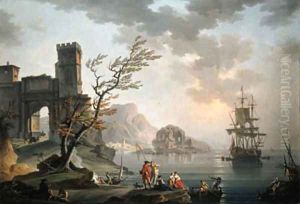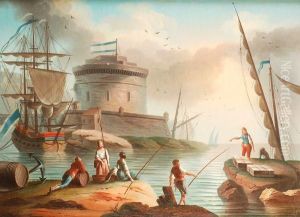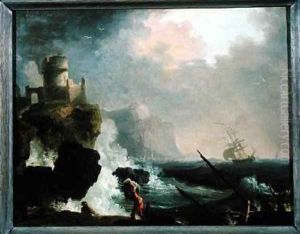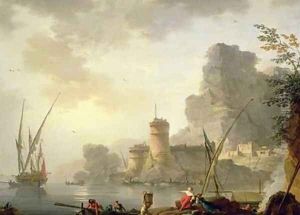Charles Francois Lacroix de Marseille Paintings
Charles Francois Lacroix de Marseille, a French painter whose exact birth and death dates are somewhat uncertain, is believed to have been born around 1700 and died around 1782. He specialized in seascapes and coastal scenes, often imbuing his paintings with a sense of calm and serenity. His works typically feature Mediterranean ports, with meticulous detail given to the ships and the play of light on the water, showcasing his skill in rendering atmospheric effects.
Lacroix de Marseille was most likely a pupil of Adrien Manglard, a notable French landscape and marine painter of the time. Although not much is known about his early life and training, his style suggests he was well-versed in the classical traditions of French landscape painting, and his marine scenes are reminiscent of the works of Claude-Joseph Vernet, another prominent French artist of the period.
Throughout his career, Lacroix de Marseille exhibited at the Salon in Paris several times, where his work received positive attention. His paintings appealed to the tastes of collectors during the 18th century who favored idyllic and romanticized landscapes. Lacroix de Marseille's ability to capture the light and atmosphere contributed to his success and the demand for his work.
Despite his relative success during his lifetime, Lacroix de Marseille did not leave a significant mark on the art world after his death. However, his paintings can still be found in various museums and private collections, and they continue to be appreciated for their aesthetic value and contribution to the marine painting genre of the time.
The scarcity of biographical details about Lacroix de Marseille has left many aspects of his life and career shrouded in mystery. What is clear, however, is that his paintings exhibit a mastery of maritime subjects and a keen eye for the interplay of light and nature, which characterize the work of a skilled artist of the French school in the 18th century.



